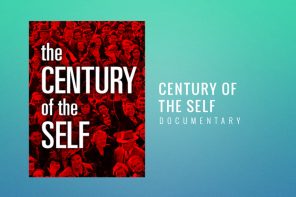
Friday December 1, 2023
Strategic Forecasting – PR’s Tool-Kit Essential
Strategic forecasting – sounds like fancy corporate speak. In fact, it’s a practice steeped in history that is helping today’s corporations steer increasingly choppy waters. From navigating the economic free-fall of COVID-19, the cost of living crisis, the energy crisis and the climate emergency to the geo-political tensions in Ukraine and, more recently, Gaza. In this blog, we take a deep dive into the Co-Founder of The Future Laboratory and leading futurist Martin Raymond’s insights to unravel the science behind strategic forecasting and how it is empowering organisations to chart a journey to better futures for business.
History of Forecasting
The desire to look into the future is not a new concept. One of the most famous names dealing with predictions was the 16th-century astrologer, physician and seer Nostradamus – so much so that Thesaurus.com offers Nostradamus as a synonym for ‘forecaster.’ He supposedly accurately predicted numerous events throughout history, such as the death of King Henry II, the Great Fire of London, the French Revolution, and Napoleon’s conquest.
However, less mystical and more strategic were figures such as China’s first and greatest historian around 145 BC, Sima Qian, who observed past events, current shifts in political changes, economic circumstances, and population drifts to map a route into the future. Then, there was the famous 14th-century sociologist and historian Ibn Khaldun, who assessed people’s needs and desires to understand what the future could look like.
Perhaps these past figures who dealt with numerous methods of future-seeking are among the first of those who contributed to what is known as modern-day strategic forecasting.
What is strategic forecasting?
Strategic forecasting is the process of utilising historical data, information and analysis to map a pathway into the future. As a result, we can prepare ourselves to make better, informed decisions on opportunities, risks and threats that may arise in the future.
Various industries have adopted forecasting into their day-to-day operations to maximise efficiency and reduce risks. The manufacturing industry might use forecasting to ensure enough inventory and supplies according to the predicted current and future demands, the finance industry to estimate earnings, the marketing industry to estimate sales, and many more industries for other purposes.
There are two basic types of strategic forecasting:
- Quantitative forecasting: The use of numerical source data to create a statistical output, such as predicting the number of Christmas sales a business will generate by utilising available data on Christmas sales in previous years.
- Qualitative Forecasting: The process of using opinions, observations, interpretations or past experiences to predict non-numeric outcomes, such as specific shifts in consumption behaviours, by conducting interviews with experts and stakeholders.
Forecasting experts will use a mix of both quantitative and qualitative forecasting to gain as much accurate insight as possible. In PR, we focus more on outcomes rather than output, so PR practitioners may find more value in the adoption of a more qualitative-heavy approach. But why should PR firms adopt strategic forecasting as a part of their everyday activities?
Staying Ahead of the Trends
As PR practitioners, our goal is to create strategies, campaigns and contributions that are relevant and impactful. One of the most common objectives clients want to achieve through PR is heightened brand awareness and positioning. To do so, we must stay on top of industry trends and hot topics in an age where a never-ending stream of information speeds up the news and trends cycles.
However, beyond simply harnessing an awareness of trends, trend forecasting gives PR firms an edge by identifying under-the-radar trends and opportunities that could be critical to a business.
Speaking about the anatomy of trends, Co-Founder of the Future Laboratory and leading futurist Martin Raymond says:
“Trends are not patterns that happen on a large scale – they begin as a minor disruption or an anomaly. So, if you think about what’s known as the curve of innovation, it starts off with innovators, early adopters, early majority, and late majority. It’s mapping along those lines of momentum, changes that will have either minor disruptions and then it works out to be a major.”
Many forecasters will argue that once our media analytics and social listening tools have picked up the dominating trends, it might be too late to position our clients as leaders rather than followers – Martin labels this as the ‘laggard stage.’ Thus, we need to keep a close eye on innovators and early adopters to equip ourselves with the knowledge and tools essential for successfully positioning our clients at the forefront of their industries.
Future-Proofing
As industries are ever-evolving, businesses have to be cautious about industry disruptors that have the potential to transform or entirely replace existing companies and industries. For example, the banking industry was disrupted by the fintech industry, the hospitality industry by Airbnb, and the TV industry by streaming services such as Netflix. After all, what good is leadership positioning in a diminishing industry?
Strategic forecasting will equip communications professionals with the ability to detect these potential disruptors early, which we can then use to forewarn our clients to ensure the survival of their businesses. The sooner we detect it, the sooner our clients can be disruptors instead of the disrupted. The title of the innovator will further solidify an organisation’s positioning, not only in the eyes of the public but also in the market in which it operates.
Reputational Risk Prevention
Strategic forecasting could also give invaluable insight into shifts in public perception, attitudes and behaviours. There is an endless list of views and behaviours that seemed unthinkable or were frowned upon decades ago but are the norms and expectations of today. Take Martin Luther King Jr., for example, who many labelled as a terrorist at a point in time but is viewed today as a visionary leader and activist today.
As many professionals know, embedding a continuous system or method of risk prevention into the operations of a business is much simpler than dealing with the aftermath of a crisis. Thus, organisations and individuals who frequently scan the future horizon are much less likely to release controversial statements and act out behaviours that may spiral into a PR problem.
How to Strategically Forecast
Now that we’ve covered the ‘why’ strategic forecasting, we move on to the last question: how can PR practitioners start their journey into forecasting?
- Broaden your horizon: The famous saying ‘knowledge is power’ is always true, though it is especially crucial in the practice of strategic forecasting. To be a great strategic forecaster, you must go beyond your specialisms. There are a multitude of similar trends that can be spotted across various industries, and that goes to show that your industry might mirror trends that have been or are currently happening in other industries.
- Let go of prejudice and biases: Conventional ways of thinking are not something that will work in favour of the strategic forecaster. The lifeblood of a great strategic forecaster is one who is ready to expect the unexpected, and the refusal to keep an open mind automatically becomes a rejection of what might be. One simple but effective way that Martin Raymond recommends as practice is to think of six impossible things, as this challenges you to look at opposites, disruptions and newness.
To learn more about strategic forecasting, listen to Martin Raymond’s PRCA Fuse Podcast episode on Spotify, Apple and YouTube.
Curzon PR is a London-based PR firm working with clients globally. If you have any questions, please feel free to contact our Business Development Team bd@curzonpr.com







Follow us